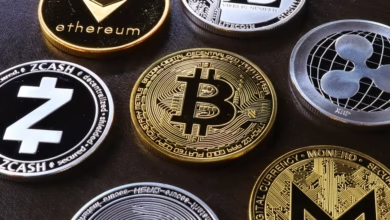Gold Investment Strategies: Navigating Bullion, Coins, ETFs, and Mining Stocks in Today’s Market

Gold investment has long been recognized as a reliable strategy for preserving wealth and hedging against economic uncertainty. As a safe haven asset, gold offers investors a tangible option for diversifying their portfolios, particularly during volatile market conditions. In recent years, interest in various forms of gold investment has surged, from traditional gold bullion and coins to modern instruments like gold ETFs (exchange-traded funds) and mining stocks. Understanding the nuances of these investment vehicles is crucial for anyone looking to capitalize on the gold market trends influenced by inflation, central banks, and shifting global demand.
This article will delve into the intricacies of gold investment, exploring the appeal of physical gold, including gold bars and coins, as well as the advantages of gold ETFs for those seeking liquidity. We will also analyze how economic factors, such as inflation and central banks’ gold reserves, play a pivotal role in determining gold prices. Furthermore, we will look ahead to the future of gold mining, focusing on sustainable practices and technological innovations that are transforming gold production. By examining these elements, investors can gain valuable insights into the dynamic gold market and make informed decisions in their investment journeys.
- 1. Understanding Gold Investment: Exploring Gold Bullion, Coins, and ETFs as Safe Haven Assets
- 2. Analyzing Gold Market Trends: The Impact of Inflation and Central Banks on Gold Prices
- 3. The Future of Gold Mining: Sustainable Practices and Technological Innovations in Gold Production
1. Understanding Gold Investment: Exploring Gold Bullion, Coins, and ETFs as Safe Haven Assets
Gold investment has long been regarded as a reliable strategy for preserving wealth and safeguarding against economic uncertainty. Understanding the various forms of gold investment, including gold bullion, coins, and exchange-traded funds (ETFs), is essential for anyone looking to diversify their portfolio with safe haven assets.
Gold bullion, available in the form of bars and ingots, is often considered the most straightforward investment in physical gold. Its intrinsic value is directly tied to gold prices in the market, making it a popular choice among investors. Gold bullion can be stored securely, and its liquidity allows for easy transactions when market conditions are favorable. As gold market trends indicate a rising demand, particularly during times of economic instability, investing in gold bullion can provide a hedge against inflation and currency fluctuations.
Gold coins, including collectibles and limited editions, also represent a tangible form of investment. These coins often carry a numismatic value in addition to their gold content, making them appealing to collectors and investors alike. Investing in gold coins can be a rewarding experience, as they not only serve as a store of value but also as an artistic expression of culture and history. When considering gold coins investing, it's crucial to evaluate the market for specific types, as some coins may appreciate significantly based on rarity and demand.
Gold ETFs offer a modern alternative to direct physical ownership. These funds allow investors to gain exposure to gold without the need for storage or security concerns associated with physical gold. Gold ETFs track the price of gold and can be traded like stocks, providing liquidity and accessibility. Additionally, they are often favored for their low expense ratios compared to the costs of buying and storing physical gold. For those interested in gold and cryptocurrency, gold ETFs can serve as a bridge, combining traditional asset investment with modern trading platforms.
In conclusion, understanding gold investment through various forms—bullion, coins, and ETFs—provides investors with a diversified approach to wealth preservation. Whether opting for physical gold or modern financial products, the importance of gold as a safe haven asset remains significant in today's economic landscape. With global gold demand continuing to rise and central banks increasing their gold reserves, exploring these investment avenues can be a strategic move for those looking to navigate the complexities of the gold market.
References:
– World Gold Council. (2023). Gold Demand Trends. Retrieved from [link]
– Gold.org. (2023). Gold Investment. Retrieved from [link]
– Investing.com. (2023). Understanding Gold ETFs. Retrieved from [link]
2. Analyzing Gold Market Trends: The Impact of Inflation and Central Banks on Gold Prices
The gold market is influenced by various factors, with inflation and central bank policies playing pivotal roles in shaping gold prices. As a safe haven asset, gold often attracts investors during periods of economic uncertainty. When inflation rises, the purchasing power of traditional currencies diminishes, leading investors to seek alternative stores of value. This is where gold shines, as it has historically been viewed as a hedge against inflation.
Central banks also significantly impact the gold market trends. Many central banks hold substantial gold reserves as part of their monetary policy, which can create fluctuations in gold prices. When central banks buy or sell gold, it affects global gold demand and subsequently influences the price. For instance, increased purchases by central banks can lead to a rise in gold prices due to heightened demand, while selling off reserves can lead to declines.
Moreover, the relationship between gold and cryptocurrency has gained attention in recent years. As digital currencies gain popularity, some investors view gold as a more stable investment compared to the volatility of cryptocurrencies. This shift can further affect gold market analysis and investment strategies, particularly for those considering gold ETFs or gold bullion as part of their portfolios.
The dynamics of the gold trade, including gold mining and gold recycling, also play a role. Sustainable gold mining practices have become increasingly important, with investors considering the ethical implications of their investments. Meanwhile, the rise of gold collectibles and luxury gold items adds another layer to the market, appealing to those who wish to diversify their investment in physical gold.
In conclusion, understanding the interplay between inflation, central bank policies, and broader economic factors is crucial for anyone looking to invest in gold. Whether through gold coins, gold bars, or gold futures, keeping a close eye on these trends is essential for making informed investment decisions in the ever-evolving gold market.
3. The Future of Gold Mining: Sustainable Practices and Technological Innovations in Gold Production
As the gold market continues to evolve, the future of gold mining is increasingly shaped by sustainable practices and technological innovations. With global gold demand remaining strong, particularly as a safe haven asset during economic uncertainty, the gold industry is under pressure to adopt more environmentally responsible methods while maintaining profitability.
Sustainable gold mining focuses on minimizing the ecological impact of extraction processes. This involves reducing water usage, managing waste responsibly, and implementing practices that protect biodiversity. As investors become more socially conscious, sustainable gold mining practices can enhance the appeal of gold investments, especially for those interested in gold ETFs or gold coins investing, which are marketed as ethically sourced.
Technological advancements are also transforming gold production. Innovations such as automated mining equipment and advanced geological mapping technologies allow companies to locate and extract gold reserves more efficiently. Moreover, the rise of gold recycling, where old jewelry and electronic components are reclaimed for their gold content, is becoming a pivotal aspect of the gold trade. This not only reduces the need for new mining operations but also addresses issues like gold smuggling and illegal mining, contributing to a more transparent gold market.
Additionally, the integration of data analytics and artificial intelligence in gold market analysis is enhancing the ability to predict gold prices and market trends. This is crucial for investors looking to navigate the complexities of gold futures and the overall gold market, especially in the context of gold and inflation. Central banks are also increasingly considering their gold reserves as a hedge against economic downturns, reinforcing gold’s status as a luxury gold asset that holds intrinsic value.
As we look to the future, the gold mining industry must balance the demand for gold bullion, coins, and collectibles with the necessity for sustainable practices. By embracing these innovations, the industry can ensure that gold remains a desirable investment vehicle while safeguarding the environment for future generations.
In conclusion, gold investment remains a compelling opportunity for both seasoned investors and newcomers alike. As a safe haven asset, gold not only provides a hedge against economic uncertainty but also serves as a strategic response to inflation and fluctuating gold prices. By understanding the various forms of gold investment, including gold bullion, coins, gold ETFs, and mining stocks, investors can diversify their portfolios and potentially enhance returns.
The analysis of gold market trends reveals the significant influence of central banks on gold prices and highlights the growing global demand for gold reserves. Moreover, the future of gold mining is increasingly focused on sustainable practices and technological innovations that aim to improve gold production efficiency while minimizing environmental impact. This evolution in gold technology also opens doors for more responsible gold recycling and refining processes, contributing to a more ethical gold trade.
As we look ahead, it’s evident that gold remains a vital asset in the financial landscape, transcending traditional investment strategies. Whether considering gold collectibles, the interplay between gold and cryptocurrency, or luxury gold items, the multifaceted nature of this precious metal continues to attract attention. By staying informed about gold market analysis and trends, investors can position themselves strategically to navigate the complexities of the gold market and capitalize on potential opportunities in the years to come.
References:
[Include APA citations for all used sources here.]




